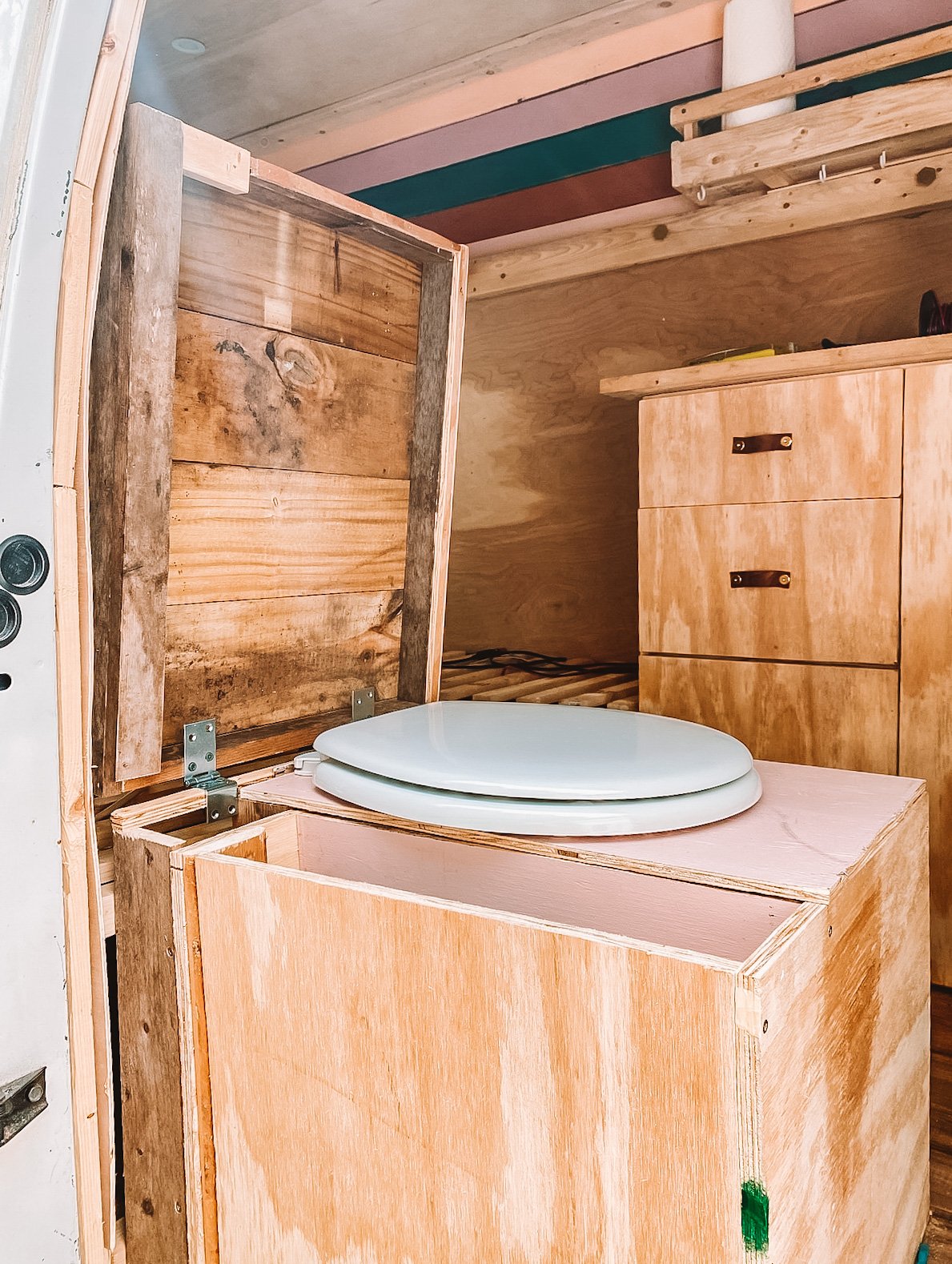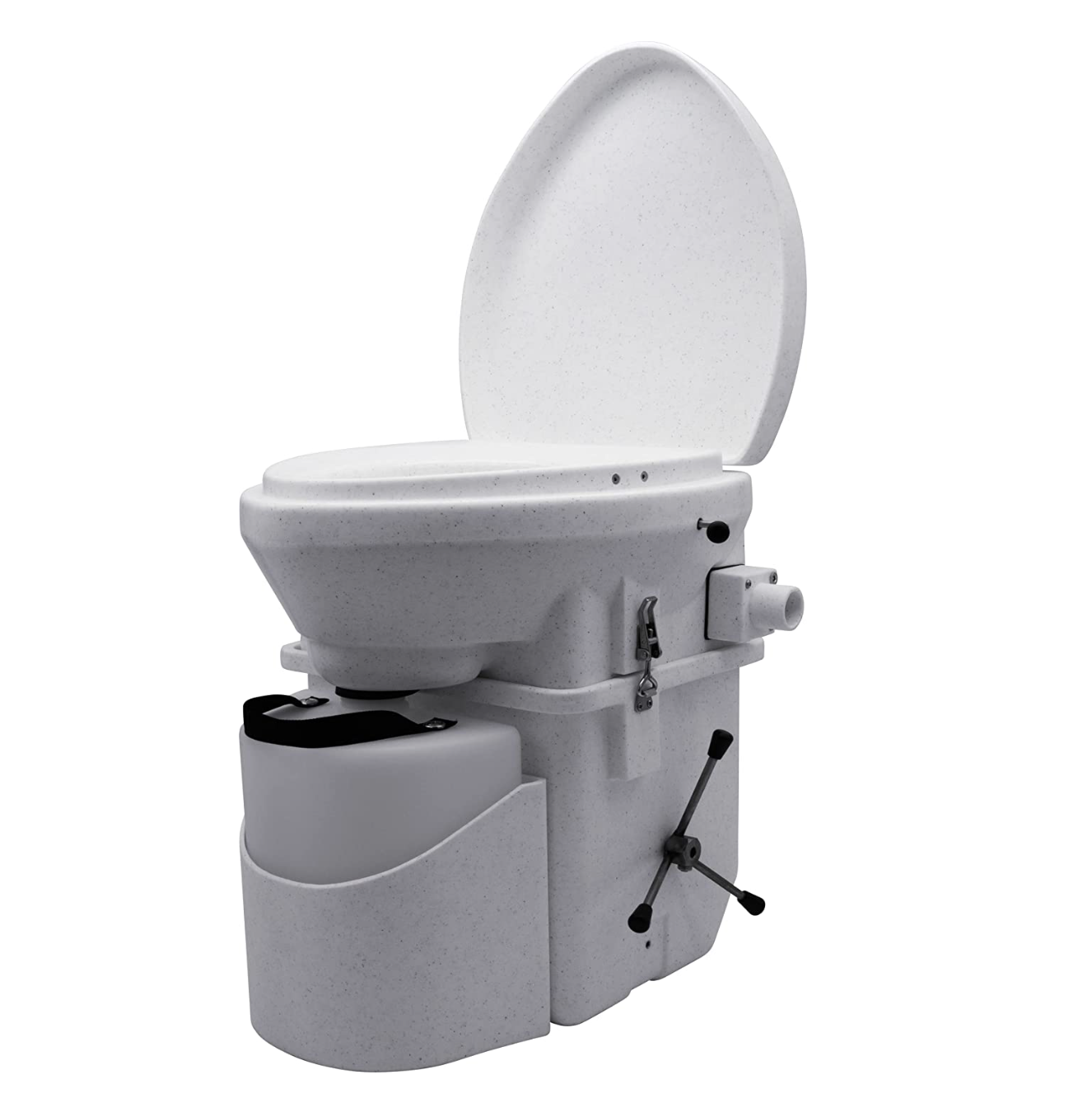Composting Toilet FAQs
If you're embarking on an off-grid living journey, one of the essential aspects to consider is waste management. When it comes to dealing with human waste, composting toilets can be a game-changer. Similar to the importance of figuring out water sources, choosing the right composting toilet for you is crucial for the successful of the toilet in any off-grid or on grid lifestyle.
We have written an entire blog post about out experience with composting toilets that includes our favorite things to use etc. You can read that by clicking here. But for now, I’m sure you’d like to read some quick answers to the questions you have… Let’s get started!
What is a composting toilet?
A composting toilet is a type of toilet that uses natural processes to break down human waste into compost. Unlike traditional flush toilets, composting toilets do not require water or sewer lines. Instead, they rely on microbes and other natural processes to break down waste into a nutrient-rich soil-like material.
How do composting toilets work?
A composting toilet can be as simple as a 5 gallon bucket with a toilet seat on it. But most composting toilets will separate the liquids from the solids to make the end product more useful. This also reduces the smell. The solid waste is combined with a carbon-rich material such as sawdust or coconut coir. This mixture is then broken down by microbes, which convert the waste into compost. This compost can be used in the garden on non-edible plants. The urine is disposed of separately.
Are composting toilets odor-free?
When properly maintained, composting toilets are odor-free. The key to odor-free operation is to ensure that the mixture of waste and carbon-rich material is balanced and that the toilet is properly ventilated. Some composting toilets also use fans or other ventilation systems to ensure that odors are properly expelled. Separating the urine and solid waste ensures that smells are kept at bay. If you do decide to keep them together, you will have to work really hard to keep the smells away.
Should I use a urine diverter?
This decision is up to you. In our opinion (and in many others as well) separating the liquids and the solids is the only way to prevent smells. This is where a urine diverter comes in. If you choose to separate the liquids and solids, you will need a urine diverter.
Which urine diverter is the best?
There are quite a few options when it comes to buying a urine diverter for your DIY composting toilet. We’ve tried two and this one is our favorite, by far. We think it is a perfect design and easy to clean.
How much maintenance does a composting toilet take?
Composting toilets need to be emptied and cleaned regularly. The amount of people using the toilet will determine how often you have to empty your waste and urine. A household of two can expect to empty the urine every 2-3 days, and the solids bucket will need to be changed or emptied out about once a month. This will also vary depending on the type of composting toilet you have. Every time the solids section is used, organic matter has to be added. So there end up being daily, weekly, and monthly things you have to do. However, none of these things take much time.
Can composting toilets be used in homes?
Yes, composting toilets can be used in homes. In fact, they are becoming increasingly popular in environmentally-conscious households. There are many different models of composting toilets available, ranging from simple, self-contained units to more complex systems that require professional installation. Some composting toilets even look like a regular flushing toilet.
Are composting toilets legal?
Composting toilets are legal in most areas, but it’s important to check with your local authorities before installing one. Some areas may require special permits or inspections before a composting toilet can be installed.
Do composting toilets save water?
Yes, composting toilets save water. Traditional flush toilets can use up to 7 gallons of water per flush, while composting toilets use little to no water. This makes composting toilets an excellent option for areas with limited water resources.
Are composting toilets expensive?
Composting toilets can be more expensive than traditional flush toilets, but they can also save money in the long run by reducing water usage and eliminating the need for expensive sewage systems. You can also save money by DIYing your own composting toilet. This is what we did and it works great! The cost of a composting toilet can vary depending on the type and complexity of the system, but they can typically range from the cost of a 5 gallon bucket and a toilet seat to several thousand dollars.
What organic matter should I use?
In a composting toilet, you should use carbon-rich materials include things like sawdust, shredded leaves, or coconut coir. What you use is really up to you. Our favorite is sawdust as this is a waste product we are always producing on our homestead. It’s very easy and cheap to obtain even if you don't produce it yourself. Some composting toilets come with pre-made mixes or recommend specific ratios of materials, so it's important to follow the manufacturer's instructions. It's also essential to avoid adding any non-biodegradable materials or chemicals to the toilet, as this can disrupt the composting process and harm the environment.
Where does the toilet paper go?
This is ultimately up to you. You can either have a separate bucket or trash can for your toilet paper or you can throw it in with the solids. For us, putting the toilet paper in a separate bucket allows us to extend how often we change out the solids bucket. Toilet paper will take longer to decompose than the human waste, so there may be bits of toilet paper in your finished compost. But throwing toilet paper in with the solids gives a more traditional toilet feel.
If you’ve read everything and still have questions, then we must have missed something! Leave us a comment below and we can hopefully help answer your question. Thanks for reading!
- Savannah











